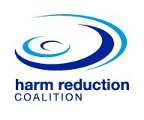Overdose Prevention
Find Out More
What to Do in the Event of an Opioid Overdose Even if you or a loved one has a prescription for opioid medication, an overdose is possible. For example, an illness or the medication itself may cause forgetfulness that leads to accidental double dosing. For those who use medications in an illicit manner, due to mental health or substance abuse issues, overdose is an even greater risk.
Even if you or a loved one has a prescription for opioid medication, an overdose is possible. For example, an illness or the medication itself may cause forgetfulness that leads to accidental double dosing. For those who use medications in an illicit manner, due to mental health or substance abuse issues, overdose is an even greater risk.
For this reason, it’s important to know what to do in the event of an accidental or intentional overdose. Here are the steps you should take in an emergency situation where a person has overdosed on opioids.
Try to Rouse the Person
If a person is unconscious and you suspect opioid overdose, the first thing you should do is try to rouse the unconscious person. Try shaking the person and shouting their name. If this doesn’t work, try pressing or even grinding your fist into the breastbone for several seconds.
Call for Help
If these efforts don’t result in wakefulness, the next step is to call 999. If you must leave the person to make the call, place them in the recovery position, lying on the stomach with one hand supporting the head, so that if the person vomits, they will not asphyxiate.
When you call 999, tell them your location and that the person is non-responsive. If you feel comfortable, tell the authorities what medications/drugs the person was taking, either over the phone or when they arrive on the scene.
If the person isn’t breathing, relay this information to the operator. If you or someone else at the scene is qualified to administer CPR, start immediately and continue until the person starts breathing normally on their own or until medical professionals arrive.
If you are not qualified to perform CPR, you may still administer rescue breathing by tilting the person’s head back, pinching the nose, and covering the person’s mouth with your own. Start by delivering two breaths, followed by one breath every five seconds.
If you are unable or unwilling to remain at the scene until authorities arrive, and no one else is present, place the person in the recovery position. Many states have Good Samaritan laws regarding the reporting an overdose, but the conditions and protections vary by state, so it’s important to understand the laws for your state.
Administer Naloxone
Rapid response is important in an emergency situation involving opioid overdose. If CPR doesn’t spur breathing, administer Naloxone before resuming CPR. If there is no response, you may administer a second dose of Naloxone after 3 to 5 minutes.
If the Naloxone is successful in reviving the person, remain with them to monitor breathing, prevent further drug use, and provide comfort until authorities arrive. Naloxone wears off within 30 to 90 minutes, often before the opioid, which means the person can slip back into unconsciousness.
How to Administer Naloxone
There are two ways to administer Naloxone: via nasal spray or via injection. To administer via nasal spray, start by assembling the applicator. Remove the yellow caps from the needleless syringe and the red cap from the Naloxone cartridge. Use the clear plastic wings on the nasal atomizer to affix it to the tip of the syringe, then gently screw the Naloxone cartridge into the barrel of the syringe.
Next, tilt the person’s head back and spray half of the Naloxone (1cc) into one nostril, then spray the remaining half into the other nostril. Resume CPR if necessary. If there is no improvement within 3 to 5 minutes, you may administer a second dose of Naloxone.
If you’re using injectable Naloxone, you’ll need an intramuscular (IM) needle about 1” to 1.5” in length. Pop the yellow top off the Naloxone vial, insert the syringe, and withdraw 1cc (equivalent to 1mL and 100u). Insert the needle straight into a muscle (shoulder, thigh, or upper, outer area of the butt) and inject the Naloxone. Continue CPR if necessary. If the person is non-responsive after 2 to 3 minutes, you may administer a second 1cc injection. Learn more about how to administer Naloxone here.